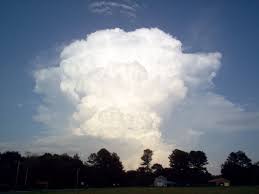Severe thunderstorms are awe-inspiring displays of nature’s power, capable of unleashing a barrage of intense winds, torrential rainfall, lightning, and hail. In this article, we delve into the intricacies of severe thunderstorms, exploring their formation, characteristics, and the impact they can have on the environment, infrastructure, and human lives.
- The Genesis of a Storm: thunderstorms typically develop when warm, moist air rises rapidly into colder atmospheric layers. This process, known as convection, sets the stage for the formation of towering cumulonimbus clouds, the giants of the storm world. As the updrafts within these clouds intensify, they fuel the development of powerful storms.
- The Elements of Destruction: thunderstorms are characterized by several elements that contribute to their destructive potential. Intense winds, known as downdrafts and microbursts, can reach speeds of over 60 miles per hour (97 kilometers per hour) and wreak havoc on structures and vegetation. Heavy rainfall can lead to flash flooding, posing a significant threat to life and property. Lightning, a dazzling and dangerous feature of thunderstorms, can cause fires, damage electrical systems, and pose risks to individuals outdoors. Additionally, hail, formed within the storm’s updrafts, can vary in size from small pellets to large stones, causing damage to buildings, vehicles, and crops.
- The Role of Weather Forecasting: Weather forecasting plays a crucial role in mitigating the impact of thunderstorms. Advanced technology and modeling techniques allow meteorologists to identify the atmospheric conditions conducive to storm formation and issue timely warnings and alerts. These warnings provide valuable time for individuals, communities, and emergency management agencies to take appropriate safety measures, such as seeking shelter, securing outdoor objects, and preparing for potential power outages and other storm-related disruptions.
- Impacts on the Environment and Infrastructure: thunderstorms can have significant impacts on the natural environment and built infrastructure. In addition to the immediate risks to human life, storms can cause widespread damage to trees, vegetation, and wildlife habitats. Infrastructure such as power lines, communication networks, and transportation systems are vulnerable to the destructive forces of severe thunderstorms. The aftermath of these storms often involves extensive cleanup efforts and the restoration of essential services.
- Staying Safe During Thunderstorms: Being prepared and knowing how to respond during thunderstorms is crucial for personal safety. This includes having a severe weather emergency plan in place, identifying safe shelter areas, staying informed through weather alerts and updates, and avoiding outdoor activities during stormy conditions. It is essential to follow the guidance of local authorities and take necessary precautions to protect oneself and loved ones from the potential dangers associated with thunderstorms.

Thunderstorms are magnificent displays of nature’s might, capable of unleashing a combination of powerful winds, heavy rainfall, lightning, and hail. Understanding the formation and characteristics of thunderstorms enables individuals, communities, and emergency management agencies to mitigate the impact of these storms. By staying informed, being prepared, and taking appropriate safety measures, we can navigate through these intense weather events and minimize the risks to life, property, and the environment. Respect for the power of thunderstorms and a proactive approach to safety can ensure that we weather these storms with resilience and emerge stronger on the other side.
Understanding the formation and characteristics of thunderstorms is crucial for mitigating their effects. Weather forecasting plays a vital role in issuing timely warnings and alerts, giving us the opportunity to take necessary safety measures. By following the guidance of meteorologists and local authorities, we can make informed decisions to protect ourselves, our communities, and our infrastructure.
The impacts of thunderstorms extend beyond immediate risks to human life. They can cause significant damage to the environment, from uprooting trees to disrupting delicate ecosystems. Built infrastructure, including power lines, communication networks, and transportation systems, can also be severely affected. Recovery efforts following thunderstorms involve not only restoring services but also addressing the long-term effects on the natural environment.
To stay safe during thunderstorms, it is important to have a well-prepared severe weather emergency plan. This includes identifying safe shelter areas, staying informed through reliable weather updates, and avoiding outdoor activities during stormy conditions. By taking these precautions and respecting the power of thunderstorms, we can minimize the risks and protect ourselves and our loved ones.

In conclusion, severe thunderstorms remind us of nature’s awe-inspiring force. By understanding their formation, being prepared, and following safety guidelines, we can navigate through these storms with resilience. Through proactive measures, community support, and advancements in weather forecasting, we can continue to adapt and mitigate the impact of thunderstorms, ensuring the safety and well-being of individuals and the preservation of our environment.